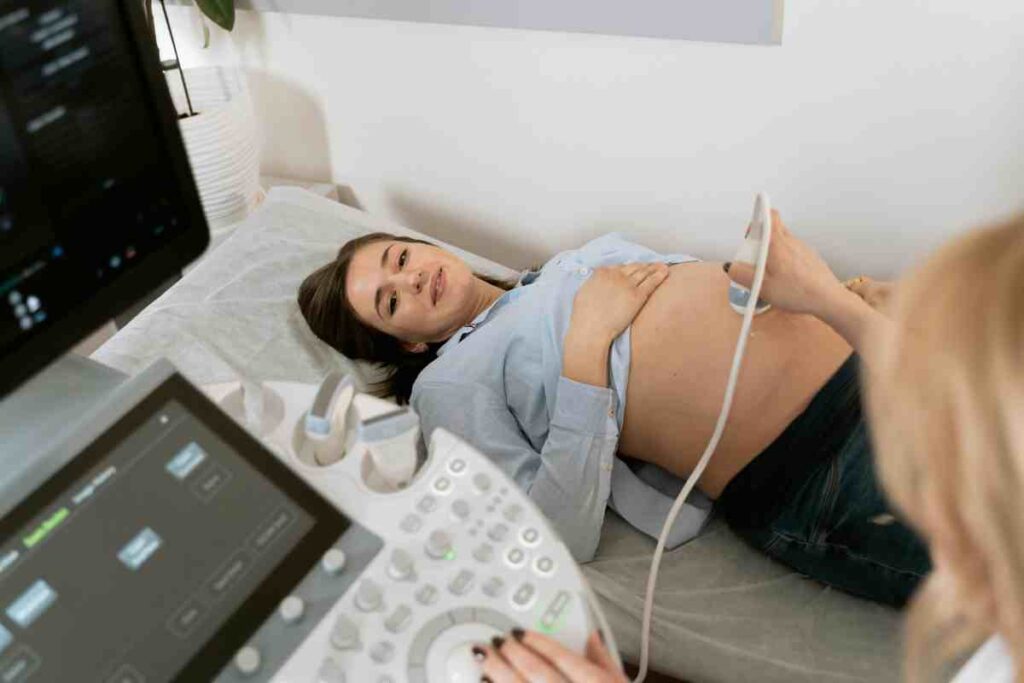Congenital Anomaly Scan or TIFFA scan

Congenital Anomaly scan or TIFFA scan is performed in mid-pregnancy to ensure proper growth and well-being of the baby. this guide will explore all aspects of Congenital Anomaly scan or Anomaly Scan.
What is Congenital Anomaly Scan or TIFFA scan mean for ?
Congenital anomaly scan or TIFFA scan is an ultrasound scan done between 18 and 24 weeks of pregnancy not only to detect the development the anomalies or abnormalities in the fetus but also to check the development of fetal organs.
The Congenital Anomaly scan is also known as Anomaly scan, level-2 ultrasound scan, anatomy scan or 20-week ultrasound scan.
Table of Contents
Why is Congetal Anomaly scan Done?

Anomaly scan is done to examine the structural development of your baby. It is done to identify any abnormality in the fetus so that appropriate and timely intervention can be undertaken. A detailed assessment of your baby’s brain, spinal cord, thigh bone, face, heart function, kidneys, lungs, and abdomen is done with this scan.
The scan provides 2D, 3D, and 4D images of the fetus and the healthcare provider will take measurements and determine if the fetus’s development is as per its age. It also evaluates the amniotic fluid, placental position, and maternal pelvic organs.
What is the Procedure of Congenital Anomaly Scan ?
While performing an anomaly scan, you will be asked to lie on your back on the couch, move your top to chest and to lower your trousers to uncover your abdomen. A gel will be applied on your belly. A handheld ultrasound probe is moved over your abdomen to scan the fetus.
Technician will take images and measurements of specific organs and parts by freezing the screen. This helps the doctor to evaluate the fetus’s size for its gestational age. You can get to watch the fetus on a screen, one of the most exciting parts of your pregnancy journey.
What does your Fetal Medicine expert examine during an Anomaly Scan?
your fetal medicine specialist carefully examines to detect anomalies in following organs.

What Conditions can an Congenital Anomaly scan Detect ?
Generally pregnant women have two common doubts in their minds, mainly after the anomaly scan.
1. first, they tend to ask whether everything is ok with the baby?
2. second they want to know what are the birth defects that we can identify in an anomaly scan?
During the fifth month the baby will be about 300 to 400 gms almost a palm size, will not be too big or too small, it will a medium-sized baby. Fetal expert check if there is any problems in the major organs of the baby from head to toe. An Anomaly scan doesn’t find all congenital conditions. However, the scan can detect following serious conditions:
- Diaphragmatic hernia (a hole in the diaphragm).
- Anencephaly ( a fatal condition that prevents the normal development of the brain and skull in a fetus )
- Indicators for Down syndrome or trisomy 18 and trisomy 13.
- Cleft lip ( an opening or split in the upper lip that occurs when developing facial structures in an unborn baby )
- Spina bifida ( a birth defect that occurs when the spine and spinal cord don’t develop properly during pregnancy )
- Congenital heart defects.
- Renal agenesis ( missing or absence of one or both kidneys).
- Gastroschisis (issue with the intestines).
- Omphalocele (type of abdominal wall issue).
- Skeletal dysplasia (problems with the bones).
It’s important to note that the 20-week ultrasound or anomaly scan results are not a formal diagnosis of any condition. Instead, it indicates that further tests are needed.
Are there any conditions an Congenital Anomaly scan can’t identify?

While the Congenital Anomaly scan can detect certain conditions, it can’t identify everything. The scan is meant to provide indicators, of serious health problems. There are some conditions you can’t know about until your baby is born. For example, many heart defects are not found until birth and you might not know if your baby has scoliosis ( a spinal deformity that causes an abnormal sideways curve of the spine ).
To Read more on Congenital Anomaly scan Click Here